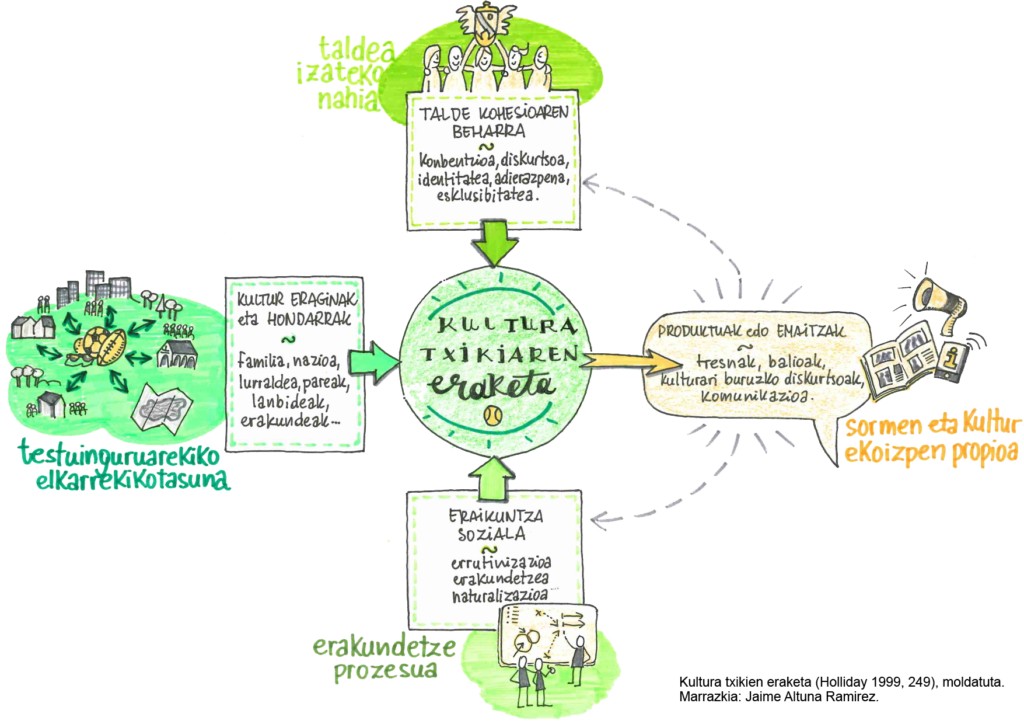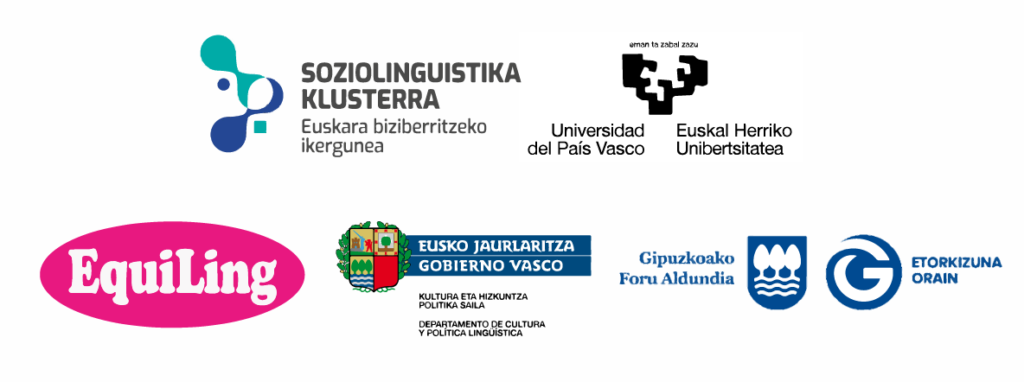The aim of Euskara Kirolkide was to understand what a club is and what it consists of. It was considered essential to do this before approaching any questions regarding Basque. Language must necessarily be understood in dialogue with its context.

In this descriptive task we found the notion of “small culture” proposed by Adrian Holliday helpful. In the words of the author, “Small cultures can be any social grouping, from a neighbourhood to a work group” (1999, 247). In small cultures, the nuance or singularity lies in the efforts the group itself makes to stay together. That is to say, small cultures do not exist on their own, a priori, or driven by some great force (such as the action of an abstract factor like ethnicity or a nation). Small cultures exist and last because they work hard at it.


According to Holliday, when the researcher perceives a set of attitudes, tendencies and thoughts that favour group cohesion, they can be said to have found a small culture: “a set of behaviours and conceptions related to group cohesion” (1999, 248). Moreover, dynamism and movement are particularly important in this approach: “One of the most salient features of cultural systems is their nature as an entity in movement and progress” (Beales et al. 1967, 5 in ibidem). These small cultures exist thanks to the processes, efforts or actions undertaken by the group, by its members together, to stay together over time and in different circumstances.

If we have perceived one thing in the process of describing each club, it is this: the desire to show themselves as a united collective, and the effort to sustain this goal over time. The continuity of the club depends primarily on this solidarity, together with the drive to cope with the changes or crises it meets along the way. Ultimately, as Holliday says (1999, 247), small cultures are no more than processes that are made and remade.
In this process of constructing a small culture, the author identifies four factors or aspects: (1) the desire to be a group; (2) relations of reciprocity with the context; (3) a process of institutionalisation; (4) its own creativity and cultural output.

These elements served as our basic structure with which to complete the description of the club on the basis of following four main sections:

